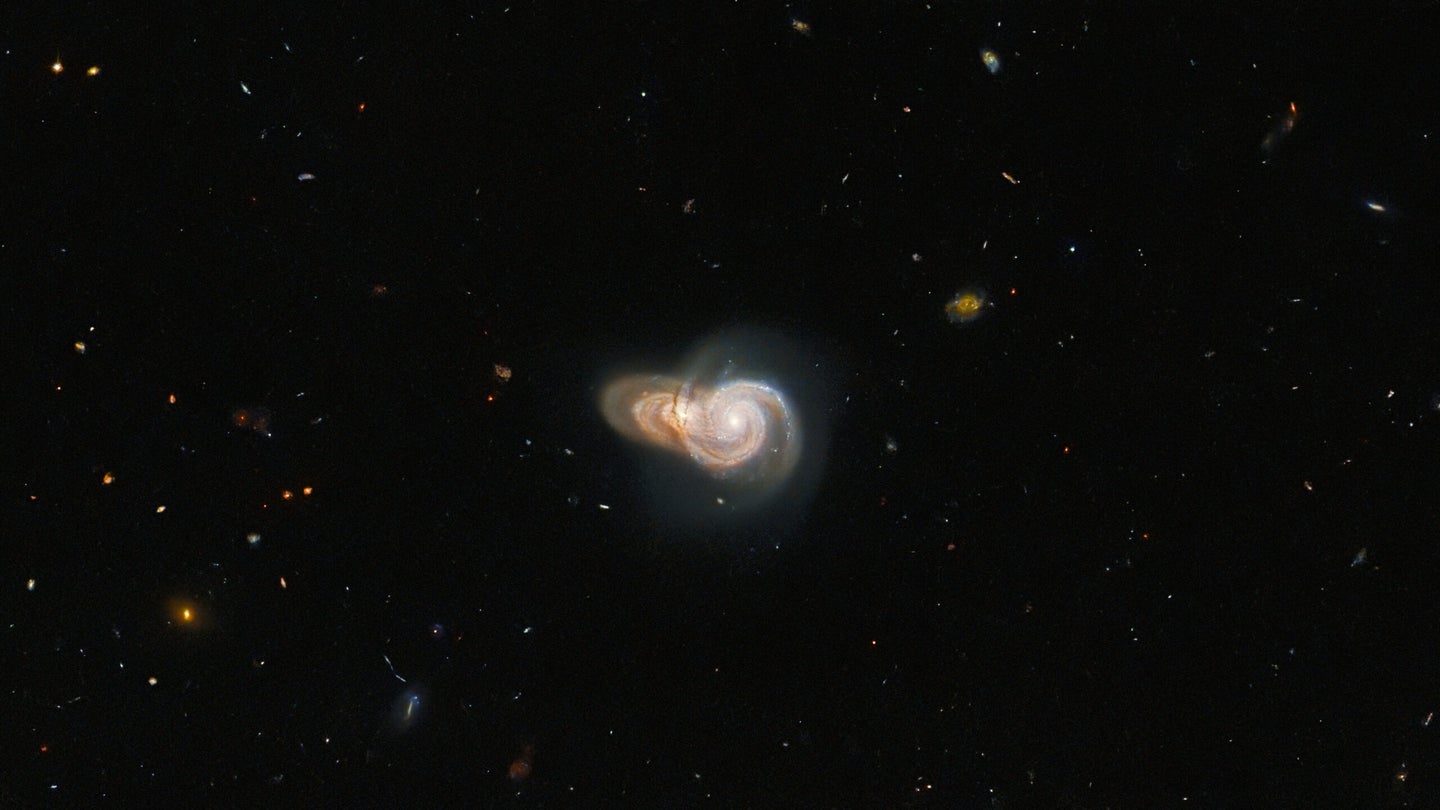The Hubble Space Telescope’s ‘galactic overlap’ image is truly stellar
The ESA likened the glimmering galaxies to two ships passing in the night.

What could be better than one gleaming, spiral galaxy? Two. A new image of a “galactic overlap” from the NASA/ESA Hubble Space Telescope and the Galaxy Zoo citizen science project appears to show two dueling galaxies more than one billion light years away from Earth. For a closer look, there is a zoomable version of the image.
While it looks like the galaxies SDSS J115331 and LEDA 2073461 might collide with one another, they are just aligned by chance and ESA likened them to two ships passing in the night. Hubble has captured similar galaxies that appear to be hanging out together in the past, such as NGC 1512 and NGC 1510 in 2017 and NGC 6285 and NGC 6286 in 2019.

[Related: Hubble image captures stars forming in a far-off phantom galaxy.]
This is one of many Hubble galaxy observations where the Galaxy Zoo project has played a big role. Since 2007, the citizen science project and its successors, including Galaxy Zoo 2 and Galaxy Zoo: CANDELS, have crowdsourced galaxy classifications from almost 90,000 volunteer astronomers. The citizen scientists classify galaxies imaged by robotic telescopes and are often the first to ever set eyes on an astronomical object, according to the European Space Agency (ESA). To date, Galaxy Zoo has classified 5,134,932 galaxies. Galaxy Zoo volunteers have also discovered a “menagerie of weird and wonderful galaxies,” such as unusual 3-armed spiral galaxies and colliding ring galaxies.
From our perspective on Earth, it’s not uncommon for galaxies to overlap like this. The new NASA/ESA/CSA James Webb Space Telescope (JWST) captured a 150-million-pixel shot a group of five galaxies that appear to swirl together called Stephan’s Quintet in July. In this group of five, only a few of galaxies in the group are interacting. According to NASA, images like this, “provide new insights into how galactic interactions may have driven galaxy evolution in the early universe.”
[Related: Behold six galactic collisions, masterfully captured by Hubble.]
Galaxies are classified into three major categories: elliptical, spiral and irregular. Ellipticals make up about one-third of all galaxies and can vary from nearly circular to more elongated. The largest and rarest are called giant ellipticals, and are about 300,000 light-years across.
Spiral galaxies are very colorful. They typically appear as flat, blue-white disks of stars, gas and dust with yellow looking bulges in the middle. There are two types of spiral galaxies, normal and barred. Barred spirals have a bar of stars running through the central bulge and the arms usually start at the end of the bar instead off from a bulge. Normal spirals have arms that extend from a center, that look like a hurricane’s eye.
Irregular galaxies are (as the name suggests) the most unusual galaxy. They’re neither disk-like nor elliptical and contain very little dust. These are often seen by astronomers as they gaze deeper into the universe. Looking that deep is like looking back in time, and irregular galaxies are abundant in the early universe, before spirals and ellipticals even developed.
